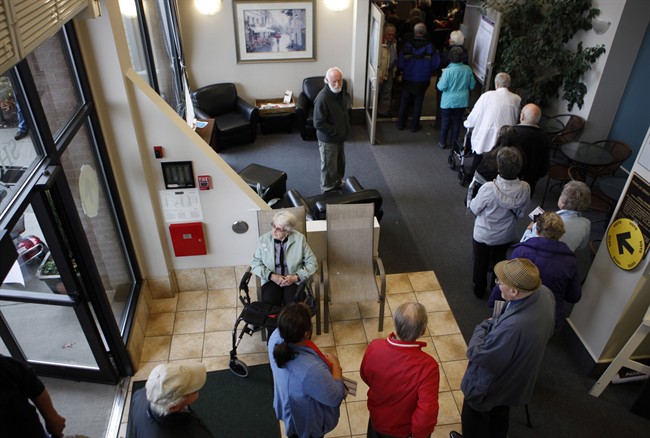The days of waiting for officials to find and cross out your name on a paper list before you can vote in a Canadian federal election are numbered.

Elections Canada is moving forward with a plan to introduce “electronic polling books” — or EPBs — in time for the next vote in 2019.
According to government documents published Thursday, the EPBs will take the form of laptops or tablets (plus data storage) provided by an outside contractor. They will eliminate the need for paperwork in the polling place itself, replacing the cumbersome paper poll books, voter lists, rulers and pencils currently used.
“Elections Canada concluded that the area of voting operations most in need of improvement is the slow and time-consuming record-keeping required at the polls, particularly advance polls,” the documents state.
READ MORE: Are Canadians ready for e-voting, or mandatory voting?
Elections Canada is hoping the new tools will cut down on wait times and get people in and out more efficiently.
The department is aiming to “deploy this solution across some advanced polls and ordinary polls,” so not everyone will be able to take advantage right away. Elections Canada also says it will be adhering to strict legislative, security and privacy specifications.
“Electoral modernization is going to happen, no matter what, and I think the proper approach to go about doing this is through small steps,” said Nicole Goodman, director at the Centre for e-Democracy and an assistant professor at the Munk School of Global Affairs.

Get breaking National news
“It appears as though that’s what Elections Canada is starting to do.”
WATCH: Protests held across Canada against Liberals’ broken promise on electoral reform

Goodman noted that any change to the voting process should always be approached carefully, but moving to an electronic voter list could improve accuracy, better prevent double-voting and enable candidates to get a more accurate snapshot of who voted and who didn’t.
The fact that the data will need to be handled by an outside actor is likely to raise concerns about security and privacy, she added, which is understandable.
But it also underscores the need for Elections Canada to develop more in-house technical expertise, and to work with experts outside the agency to make sure they’re following best practices while protecting privacy and security.
“If Elections Canada is going to walk this path, that needs to be a key priority and focus for them,” she said.
A number of provinces (British Columbia, Alberta, Saskatchewan, Ontario, Quebec, New Brunswick and Prince Edward Island) are already using, or planning to use, EPBs and e-lists during their elections, the government documents note.
WATCH: Electoral reform committee recommends against mandatory, online voting

While the new initiative may slowly begin introducing technology into the voting process, Elections Canada is making it clear that e-voting (or actually casting a ballot with the help of a computer) is not in the cards.
“Elections Canada has no plans to introduce electronic casting or counting of votes,” the documents state.
“Polling places will continue using paper ballots, marked and counted by hand.”


Comments